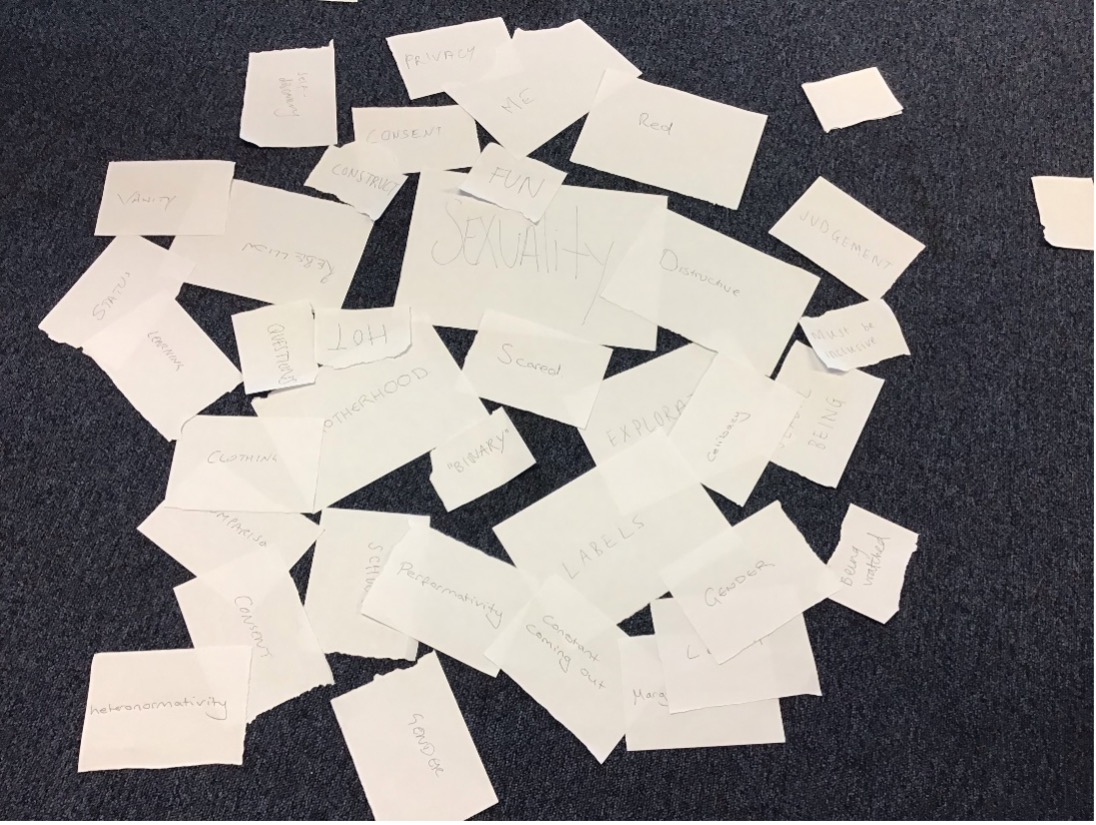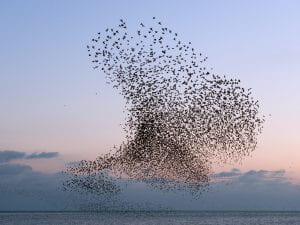CAW Visiting Research Fellow Sebastián Collado (PhD student at Universidad Alberto Hurtado, Chile) reports on a recent workshop he conducted on the Performative Narrative Interview, a research methodology developed during his PhD studies.
In the first days of November of 2021, I had the opportunity to share with academics and postgraduate students from the University of Brighton the research methodology that I created during my PhD to study the relationship between the narrative identities of sexually diverse people and their psychological distress in Santiago de Chile. The research methodology is called Performative Narrative Interview.
About my personal and theoretical background
I love to study human psychology from perspectives that defy the individualising nature of mainstream psychology. My theoretical background is contemporary/feminist psychoanalysis and dialogism. Beside my academic activities, I also work as a performance artist and art therapist with marginalised communities, creating autobiographical performances.
What is a self-narrative?
My academic and experiential knowledge has taught me that to create a self-narrative, people use their own embodied autobiographical memories. However, memories are not always available to be used. Due to disruptive and/or traumatic experiences, sometimes memories are displaced from consciousness, or they are too shameful or painful to be shared. It can also be that people tell certain things and not others to protect their very sense of self-coherence. Furthermore, in the research context of creating a self-narrative using one’s own autobiographical memories, the researcher/facilitator plays a crucial role, for it is this person who is the one in charge of providing the proper conditions for safely remembering, sharing, and feeling. Drawing upon artistic practices and creative research methods, the performative narrative interview is a sensitive strategy for data production in which a multi-perspectival self-narrative can be created between research participants and a researcher/facilitator.
Experience in Brighton
My aim in Brighton was to show the participants the different steps of the group session of the performative narrative interview. I did not talk much about the theory behind the method. I wanted the participants to learn by doing. Therefore, we first started with a group warm-up to connect the self with oneself and with the other participants in the room: How does my body feel today? How is my breath in this moment? Can I feel any emotions? What kind of thoughts do I have today? What do the people in this room look like? Am I having any thoughts or prejudices about them? Isn’t it weird to be sharing this space with these people?
The second step was the creation of conceptual collages to foster a group discussion. In the pictures below, you can see the collages that we created during the workshop in Brighton:


In my original investigation with sexually diverse people, we discussed concepts such as sexuality, homosexuality, and heterosexual man. In the workshop in Brighton, we also discussed the concept of sexuality. Nevertheless, I told the participants that they can use this specific form of discussion, applying it to their own investigations. The collage discussion is not solely verbal. As can be seen in the pictures, words such as sexuality and homosexuality are placed on the floor. Later, participants write down any concepts (e.g., colours, words, pronouns, persons, adjectives, etc.) that they associate with sexuality and homosexuality. In the beginning of the discussion, there are no spoken words, only more and more concepts, some laughs, curious faces, and a lot of body movement around the room. Only when the floor is full, do participants discuss. In Brighton, the collage discussion was not only about the actual words, but also about the reactions that emerged in the participants while observing the different concepts coming up.
In the last hour of the workshop, participants created visual material which is specifically oriented to promote the creation of a self-narrative related to one’s own sexuality: the sexual identity graph. Below, you can see a picture of a sexual identity graph created in the context of my research in Chile (Oops! I forgot to take pictures of the graphs in Brighton):

The sexually identity graph is visual material that I use to enhance a felt remembering process. First, participants freely write a list of events that, according to them, relate to their sexualities. Later, participants create a graph with two axes: a horizontal axis for age and a vertical axis with numbers from 0 to 10. Finally, participants place the events from the list in the corresponding years and evaluate how they think that they felt during the event (0 = I felt horrible and 10 = I felt great). Although I used this graph in my research with sexually diverse people, I have used it to create other identity graphs such as the migrant identity graph. In my experience, the identity graph is a great visual material that fosters and supports the process of talking about one’s own life.
The workshop in Brighton was a fantastic experience. Participants wanted to learn something new, and, despite the language barrier, I felt comfortable and welcome. I truly appreciate the openness and trust that the Centre for Arts and Wellbeing has had in me and my work. In the future, I would like to continue developing methodologies to studies sexually and gender diverse identities. Within academia, there is a lot of quantitative knowledge around sexually and gender diverse people’s mental health; nevertheless, I believe that we still need to develop strategies to address the embodied/felt experiences that underlie different forms of psychological distress.
More about my work:
Co-authored article: Collado S and Besoain C (2020) Becoming in Resistance: The (Un)Creative Relation Between Non-heterosexual Identity and Psychological Suffering. Front. Psychol. 11:502755. doi: 10.3389/fpsyg.2020.502755





Leave a Reply